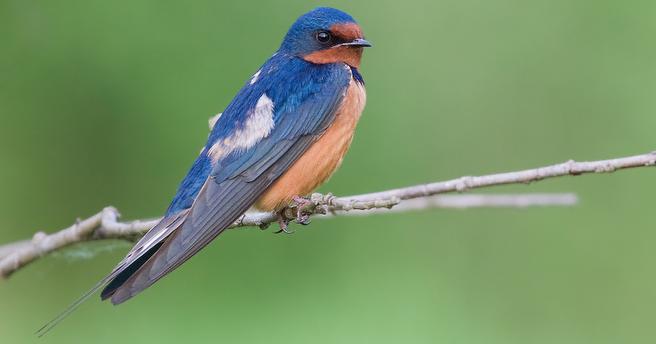Of swallows and barns
Zack Metcalfe | Endangered Perspective

There are few species of bird so common as the barn swallow, a petite creature which adapted so fabulously to life among humans that we named it after our most essential of agricultural enclosers. With a fondness for nooks and crannies, these small birds flourished on farmlands across Canada for centuries, but now they’re falling victim to one of the swiftest and most inexplicable declines of our time.
There are an estimated 4.9 million barn swallows left in Canada as of 2011, which might sound numerous but this is only a fraction of their former abundance. Between 1970 and 2009 their numbers dropped a staggering 76 per cent across Canada, with 30 per cent of that drop taking place in the last 10 years of the survey.
This decline was particularly pronounced in Atlantic Canada and the barn swallows of Nova Scotia were no exception. Although precise figures are difficult to obtain, it’s believed locally their numbers have plummeted between 60 and 98 per cent. And most frightening of all, we aren’t certain why.
There are theories, of course; one points to the increasing scarcity of open barns and other structures available as swallow habitat. As old wooden barns are being torn down in favour of new steel ones, barn swallows are increasingly without safe perches for their nests. The steel roofs of modern barns get too hot for chicks and there are fewer entrances. But there are likely other, larger factors at work against these poor songbirds.
The barn swallow is among a number of species known as aerial insectivores, those who eat almost exclusively flying insects while in flight themselves, and it’s this group of birds which is declining faster than any other in North America. This would suggest the number of flying insects is in decline also, or at least that these insects are not at their peak abundance when swallows need them most, leaving these hungry aviators without food for themselves or their chicks. This scheduling mismatch is a consequence of climate change.
Another theory concerns the migration of the barn swallow, which travels to Central and South America during the winter months. Perhaps their wintering grounds or the migrations themselves are increasingly inhospitable due to habitat loss, the heavy use of insecticides and whatever else.
The barn swallow was listed provincially as an endangered species in 2013 and since then researchers have been working tirelessly to understand this persisting decline with hopes of reversing it. But until the exacting tools of science uncover this disheartening mystery, the best we can do for the barn swallow is make available as much room and board as possible. Throw open the windows of your old barns and sheds, erect what specialized birdhouses you can, for goodness sakes put away your insecticides and wait patiently for this humble bird to serenade you with a chirpy tune when it returns in May.
Zack Metcalfe is a freelance environmental journalist, an author, and writer of the Endangered Perspective. He operates out of Halifax, Nova Scotia.
